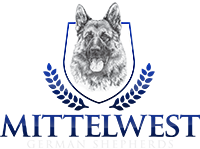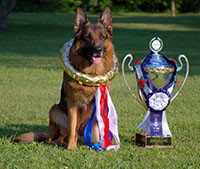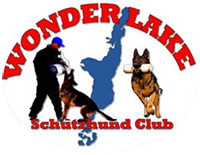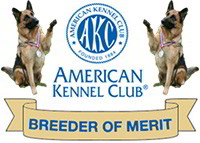When adopting a German Shepherd, one important factor to think about is the coat type: long-haired or short-haired. Each coat type comes with its own set of characteristics that can influence your decision depending on your lifestyle, preferences, and environment. Understanding these differences helps potential dog owners, especially those new to the breed or choosing between the two varieties.
This article delves into the key differences and similarities between long and short-haired German Shepherds. It will explore aspects like grooming needs, shedding patterns, temperament, health considerations, and how each coat type fits into different lifestyles. By the end, you will have a better understanding of which type of GSD may be the best fit for you and your family.
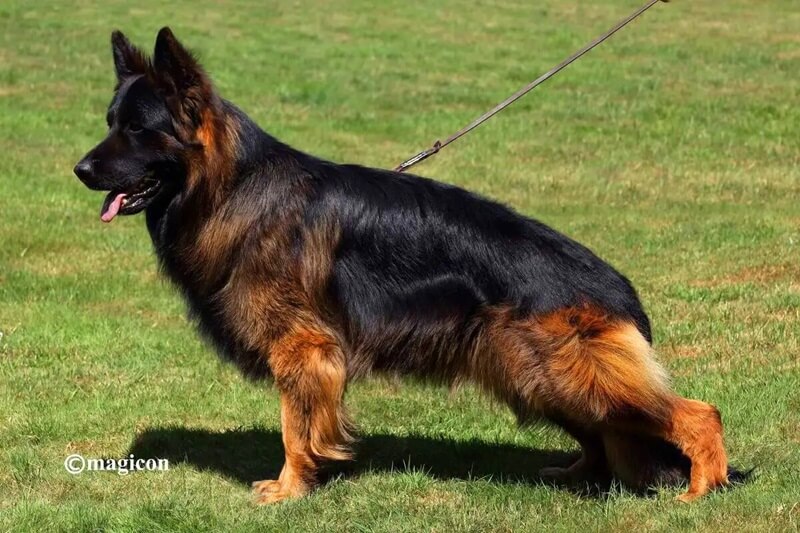
Understanding German Shepherd Coat Types
Before diving into the differences between long-haired and short-haired German Shepherds, you must understand the distinct characteristics of each coat type. Long-haired GSDs have a flowing, thick outer coat, while short-haired GSDs feature a sleek, closer-fitting coat with minimal undercoat.
Long-Haired GSD
Long-haired German Shepherds are often recognized for their flowing, dense, and thick fur. The coat can appear almost like a mane around the neck, and the fur on the back and tail is longer than that of the short-haired variety.
Despite their name, these dogs don’t have “extremely long” fur, but their coat is certainly longer than the short-haired type. This makes them a bit more striking in appearance, with a plush and regal look that many dog lovers adore.
Short-Haired GSD
Short-haired German Shepherds are known for their sleek, compact, and well-defined coats. The fur is dense but much shorter than that of the long-haired variety, giving these dogs a more streamlined and athletic look. Their coats are typically straight and lay flat along the body, with a very clean appearance.
Short-haired GSDs still have the same overall strength, agility, and intelligence. However, they are lower maintenance in terms of coat care compared to their long-haired counterparts.
Key Differences Between Long & Short Haired GSDs
When deciding between long and short-haired, there are several factors to consider, such as grooming requirements, shedding levels, and care needs. Understanding these key differences will help you choose the right dog that fits your lifestyle and maintenance preferences.
Coat Length & Appearance
The most obvious difference between long-haired and short-haired German Shepherds is their coat length. Long-haired GSDs have a thick, luxurious coat that can create a more dramatic look. Their fur is not only longer but also softer and more flowing, especially around their neck and legs. This makes them visually stunning, with a plush mane-like appearance around their shoulders.
Conversely, short-haired GSDs have a cleaner, more streamlined appearance. Their fur lies flat against their body, giving them a sleek, athletic look. They still retain the same muscular, powerful frame that the breed is known for. Both types are highly athletic and agile, but the long-haired variety tends to stand out more in sheer beauty and visual impact.
Grooming Needs
The grooming requirements of long-haired and short-haired GSDs differ significantly. Long-haired GSDs require more maintenance, as their fur is longer and more prone to tangling and matting. To keep their coat in top condition, regular grooming is essential. This includes brushing at least 3-4 times a week to remove loose hairs and prevent tangles.
If left unchecked, a long-haired German Shepherd’s coat can quickly become matted, leading to discomfort, skin irritation, and potential infection. Regular brushing helps prevent matting, but professional grooming may be necessary every few months. It ensures the coat remains healthy, shiny, and free from tangles, keeping your dog comfortable.
Short-haired GSDs, in contrast, require less maintenance. They typically only need brushing 1-2 times a week to remove dead hairs and keep their coat looking neat. Since their fur is shorter, there is less chance of matting or tangling. While they still shed regularly, it’s easier to manage their grooming needs compared to long-haired GSDs.
For those with limited time for grooming, short-haired GSDs may be a more convenient choice.
Shedding & Allergies
Both long-haired and short-haired German Shepherds shed, but the amount and visibility of the shedding can differ greatly. Long-haired GSDs shed more profusely, especially during the change of seasons. Their longer fur means that the shedding is more noticeable, and it can become a chore to keep up with it.
If you’re prone to allergies, it’s worth noting that the shedding from these dogs can aggravate symptoms more than the shorter-haired variety. Regular brushing can help to manage the shedding, but long-haired GSDs will still leave hair on your furniture, clothing, and around the house.
Short-haired GSDs shed less visibly, but they still experience seasonal shedding. Due to their shorter fur, the hair is not as noticeable, which makes it easier to manage. For individuals with allergies, short-haired GSDs are typically a better option as their shedding is less severe.
However, it’s noteworthy that all German Shepherds can trigger allergies due to their dander, so regular cleaning of living spaces is still essential.
Temperament & Health Considerations
While coat type affects appearance and grooming requirements, it’s also important to consider how it might influence temperament and health. Long-haired German Shepherds may require more attention to grooming, while short-haired GSDs tend to be lower-maintenance, impacting overall care and time commitment.
Temperament Of Long-Haired GSDs
Long-haired German Shepherds are known for being calm, affectionate, and a bit more reserved than their short-haired counterparts. Some believe the longer coat contributes to a more mellow personality. However, temperament largely depends on the individual dog’s upbringing and training. Long-haired GSDs are typically very loyal to their families, protective of their homes, and eager to please.
Although they can be more sensitive, long-haired GSDs are just as versatile as their short-haired siblings. They excel in various roles, including search and rescue, therapy, and protection. Their calm and gentle temperament makes them excellent companions for families. However, they need more patience and care due to their higher grooming needs.
Health Considerations For Long & Short-Haired GSDs
Both long-haired and short-haired German Shepherds are generally healthy dogs, but there are some differences to consider. Long-haired GSDs may be more prone to skin issues due to their thicker coats, while short-haired GSDs tend to be resilient to hot weather conditions.
Long-haired GSDs can be more prone to certain skin conditions because their coats can trap moisture, leading to hotspots and infections. Additionally, their thicker fur may exacerbate underlying skin issues or cause discomfort if not properly groomed. However, their overall health is on par with that of short-haired, provided they are given proper care.
Short-haired GSDs don’t have the same risk of matting or skin infections related to their coat. However, they can still experience the breed’s common health issues, such as hip dysplasia, elbow dysplasia, and degenerative myelopathy. They may have fewer problems with coat-related health issues, but this doesn’t make them immune to common genetic health concerns.
In terms of longevity, both types of GSDs typically live between 9 and 13 years, depending on their overall health and care.
Lifestyle Considerations That Suit Your Needs
When choosing between a long-haired or short-haired German Shepherd, lifestyle and environment are key factors to consider. Long-haired GSDs may require more grooming and care, while short-haired GSDs are better suited for warmer climates with less maintenance.
Climate & Environment
Long-haired GSDs are better suited to colder climates due to their thick, double-layered coats. The long fur helps to protect them from the cold, making them ideal for environments with chilly winters and cooler temperatures. In warmer climates, they may struggle with heat, so owners in hot areas need to ensure they keep their dogs cool.
Conversely, short-haired GSDs are more adaptable to warmer climates. Their shorter coat allows them to stay cooler, making them a better choice for hotter environments. While they can still handle some cold weather, they won’t fare as well in extreme temperatures compared to their long-haired counterparts.
Activity Level & Maintenance
Long-haired GSDs generally require more time and attention for grooming, a consideration for active owners willing to invest time in coat maintenance. If you’re a busy individual or family, their grooming needs might become an added burden.
Short-haired GSDs are lower-maintenance when it comes to grooming. They are also better suited for active families who prefer a dog that doesn’t require as much attention to coat care. Further, they can keep up with outdoor activities and sports without much grooming hassle.
Choosing The Right German Shepherd For You
Ultimately, choosing the right German Shepherd comes down to your personal preferences, lifestyle, and ability to manage grooming. If you enjoy regular grooming and want a visually striking dog with a luxurious coat, a long-haired GSD could be a perfect fit.
These dogs are ideal for families with the time and resources to maintain their coats, as long-haired GSDs require regular grooming to prevent matting. In return, they offer loyal companionship, affection, and a strong bond with family members, making them great family pets.
For individuals who prefer a dog with a sleek appearance and lower grooming demands, a short-haired GSD is a more suitable option. They’re easier to care for and adapt well to a variety of living environments. This is especially true in warm climates or for active owners who may not have time for frequent brushing.
Choosing between long and short-haired GSDs depends largely on the time you are willing to invest in grooming and the climate in which you live. The personality and temperament of the dog remain consistent regardless of the coat type, so your choice depends on the level of care you can provide.
Mittelwest Supplies High-Quality German Shepherds
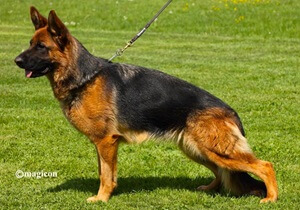
If you’ve decided on the German Shepherd as your next dog, it’s important to choose a reputable breeder. Mittelwest is a trusted name in the German Shepherd breeding world, offering high-quality dogs bred for both companionship and professional roles.
We are known for our commitment to breeding healthy, intelligent, and well-tempered dogs. We produce puppies that excel in everything from family life to service work. Our breeding philosophy is centered around ensuring each German Shepherd has the right balance of intelligence, trainability, and temperament.
Our puppies undergo early training and socialization, assuring new owners of a well-adjusted, confident dog. We also focus on producing dogs with excellent health, minimizing common genetic issues found in the breed. Our services include the sale of puppies as well as fully trained dogs for families, personal protection, or service work.
We offer tailored training programs to help owners ensure their German Shepherd thrives in any environment. Mittelwest is dedicated to providing ongoing customer care, supporting owners throughout the dog’s lifetime, and offering advice on care, training, and health.
Summary
When deciding between long and short-haired German Shepherds, the key differences come down to grooming needs, shedding, and appearance. Long-haired GSDs are visually striking and require more grooming, while short-haired GSDs are lower maintenance and better suited to warmer climates. Both types share the same intelligence, loyalty, and protective instincts that make them excellent pets and working dogs
Ultimately, the decision depends on your lifestyle. If you have the time and enjoy regular grooming, a long-haired GSD could be the perfect fit. If you prefer a dog that requires less maintenance and is better suited to warmer climates, a short-haired GSD may be the better choice. Working with a reputable breeder like Mittelwest ensures you get a high-quality dog with excellent temperament and training.

